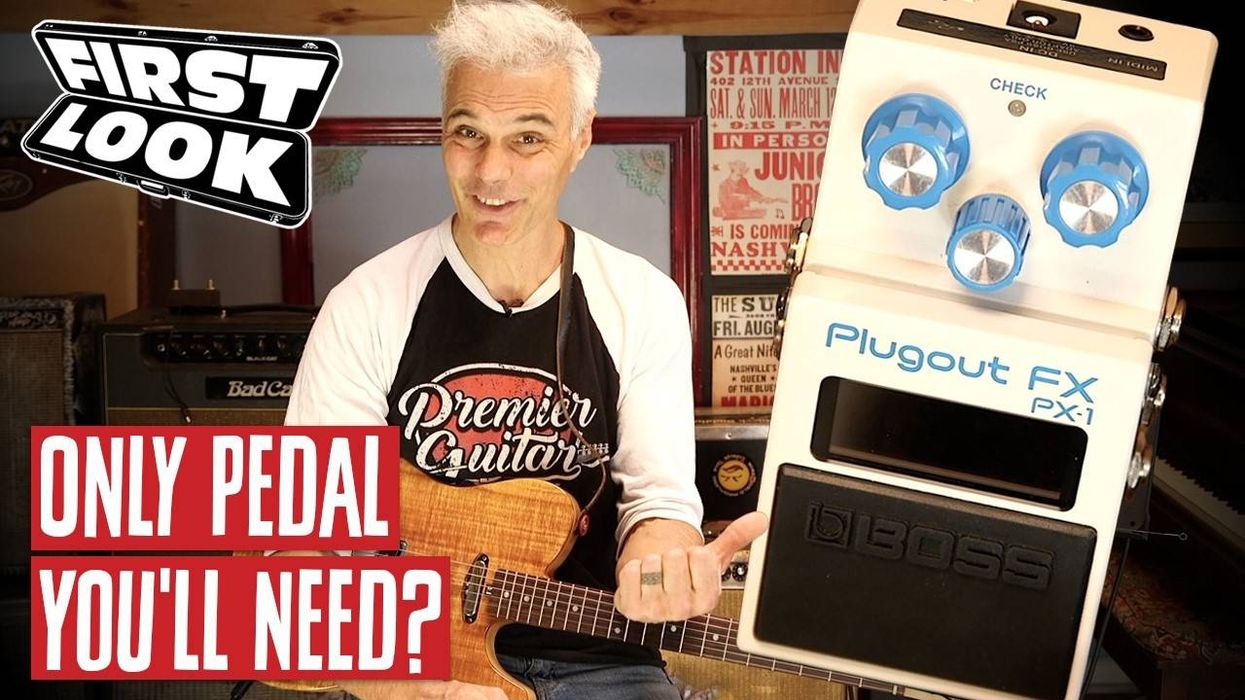Though I treasure it, my vintage Electro-Harmonix Deluxe Memory Man has seen better days. Its aging innards make many mystery noises, the pots wobble and crackle, and it hasn't shrunk down to a more convenient size in the intervening decades. It could really use a top-to-bottom tune-up from an expert. Or, I could just consider chasing down a Clockwork by J. Rockett Audio Designs.
The Clockwork analog delay was co-designed with one of the foremost experts in Deluxe Memory Man circuitry. In fact, it was designed with the man who conceived the original Deluxe Memory Man, Howard Davis. Pedigree aside, Davis' design input is clearly audible in the authentically DMM-like output of the Clockwork. So is J. Rockett's knack for refining already near-perfect circuits. The Clockwork is lively, feels super dynamic and responsive, and features practical improvements on the original design, like switchable modulation, expression pedal functionality for delay time and repeats, and digitally controlled tap tempo.
Putting the Rock in Rockett
Original Deluxe Memory Man pedals could be a bit fragile. The folded steel enclosure on mine cratered around the footswitch, and the vibrato/chorus slider switch bought the farm years ago. There's little risk of such fates befalling the Clockwork's hardware. While just a fraction of the size of a DMM, it weighs more thanks to the burly and bulletproof enclosure. Switches and knobs all work like features from precision scientific instruments.
The improvements on the original DMM design are smart and pay immediate creative dividends. For starters, there's 600 ms of available delay, rather than the 300–400 ms maximum delay time of an original. There are also speed and depth controls for the Clockwork's modulation, rather than the single depth knob on the DMM. The modulation can be switched in and out with a footswitch, which was not possible on the DMM.
The expression pedal functionality for delay time and delay repeats also expands the Clockwork's color palette in thrilling, visceral ways
The tap tempo switch and expression pedal functionality for delay time and delay repeats also expands the Clockwork's color palette in thrilling, visceral ways. There's only one real noticeable absence from the DMM's feature set, and that's the vibrato/chorus switch. While J. Rockett opted for the vibrato effect exclusively, the extra control makes chorus and flange-like effects possible.
Radical Replay
If there's a word to sum up the feel of the Clockwork, it's "alive." To my ears, there is a genuinely organic feel in the way the repeats decay and blend into a cohesive wash as they slip into the ether—making Clockwork ideal for spacious repeat times and multiple echoes. Slapback sounds crackle with energy and attitude, especially when you add gain from the level control, which, by itself, adds everything from a barely discernable dB bump to a hot, mid-'60s Mike Bloomfield edge. At its highest gain settings, it will kick a tube amp into beautiful mid-gain crunch spaces. And adding fast-repeat, quick-decay doubling effects from the Clockwork's delay section can make rhythm riffs and leads sound sizzling.
The Clockwork's modulation section is vastly more versatile than the chorus/vibrato on a Deluxe Memory Man. The depth and speed controls have expansive range, and you can create much more varied and weirder textures than anything from an old EHX. At speed settings of about 75 percent of maximum, the vibrato pulses like a cross between fast bias tremolo and Magnatone amp vibrato. Dial back the speed a bit more, reduce the delay time, and bump the repeats to approximate reverb, and you have a very idiosyncratic, spacey, and slightly metallic rotary speaker tone that twists Memphis soul chord progressions and melodic leads into less familiar forms. Applying these similarly strong modulation tones to long delays and repeats yields woozy, queasy pitch wobble, or, at faster speeds, ray-gun trills.
The Verdict
I'm not the only person I know who is reluctantly retiring their Deluxe Memory Man to special-occasions-only usage. It's hard to imagine a more intriguing replacement than the Clockwork. It's a lot more fun than most digital DMM emulations. It feels more lively, more responsive, and interactive. Your opinions may vary if you like immaculate repeats. And if your pedalboard is stacked with a zillion other devices, the Clockwork's colorful, sometimes hazy and dirty delays might lose some magic and nuance in the wash of 10 pedals. The Clockwork still sounds amazing under such conditions, and you don't need a streamlined pedalboard to get the most out of it. But players who make the Clockwork a centerpiece of a smaller rig might be startled by how many pedals the lush and limber device renders redundant.





























